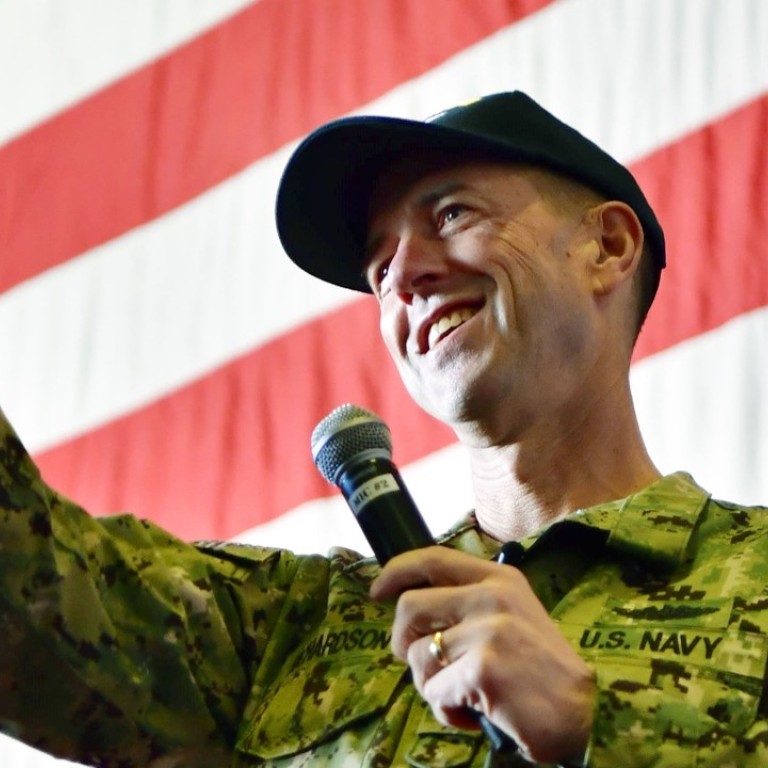
US navy planning to boost presence in western Pacific over North Korean nuclear crisis
Reinforcements may be needed to counter threat, senior commander says, but Chinese analysts argue move could be used to curb Beijing’s ambitions
The United States is planning to increase its military presence in the western Pacific to cope with increased threats in the region, the navy’s most senior commander announced on Tuesday.
Chinese miliary experts believe the US is using the ongoing tensions over the North Korea nuclear crisis as an opportunity to reinforce its presence in the region, but its ultimate goal is to restrain a rising China.
Chief of US Naval Operations Admiral John Richardson told a briefing aboard the USS Ronald Reagan aircraft carrier in Japan on Tuesday that vessels from the Third Fleet in the eastern Pacific could be brought forward to reinforce their naval colleagues in the western Pacific.
“We will continue to assure that we meet all of our missions here in the Asia-Pacific area. It could be something coming forward from Third Fleet or something like that to meet those requirements,” Richardson said, but declined to say when or how many ships could be transferred.
He also reiterated America’s concerns about Beijing’s artificial islands in the South China Sea, where China has territorial disputes with many neighbouring countries.
“One can only draw certain conclusion about what are the intentions of the Chinese with respect to those islands. We will respond as we have always done, which is that we are going to continue to be present down there,” Richardson said.
For now, he said, North Korea was the “most urgent” task for the US navy in Asia as it became “more and more capable” with every new missile test.
Pyongyang conducted its latest intercontinental ballistic missile test on November 29.
Analysts said the missile was the regime’s most powerful to date, with an estimated reach of up to 13,000km – putting the entire US mainland within reach of Pyongyang’s nuclear arsenal.
Song Zhongping, a military commentator for Hong Kong’s Phoenix Television, said the US was trying to use the North Korea nuclear problem to reinforce its Seventh Fleet in the western Pacific by shifting more aircraft carrier battle groups from the Third Fleet, which would be turned into a support force in the region.
“The Chinese navy and air force will face unprecedented challenges if the US reinforces its military deployment in the western Pacific, because it’s likely the Pentagon would deploy four to six aircraft carrier battle groups to the region,” Song said, adding that the ongoing nuclear crisis had provided Washington good reasons to do that.
“If the US wants to solve the North Korea nuclear problem by military means, its current three carrier battle groups in the region are not enough to create absolute combat superiority … it needs four to six carrier battle groups to support its possible military actions.”

Richardson was speaking after US President Donald Trump unveiled a new national security strategy based on his “America first” vision that singled out China and Russia as “revisionist powers”.
Beijing-based naval expert Li Jie agreed that Washington’s latest deployment in the region was aimed at the People’s Liberation Army.
“The US feels under pressure watching the PLA navy and air force growing so rapidly,” he said.
Normally there would be only one carrier group stationed in the area, he said, but “Trump’s administration realised that its current military deployment … is far from enough to cope with the increased security challenges in the region”.
Li also referred to a series of accidents involving US naval vessels this year, including two collusions involving destroyers and merchant ships that killed 17 US sailors.
Given the fact that China would soon have two carrier battle groups – the Liaoning and its sister vessel, the home-grown Type 001A aircraft carrier – Song said that Beijing had expected Washington to increase its naval capacity in the region.
Additional reporting by Reuters


